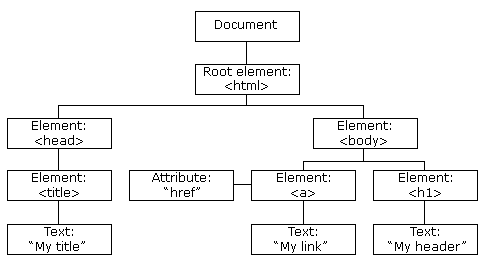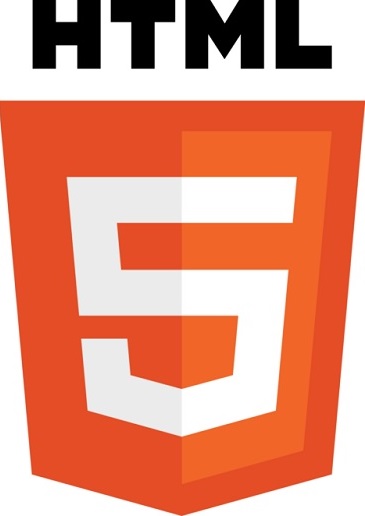What is the HTML DOM?
The HTML DOM is an Object Model for HTML. It defines:
- HTML elements as objects
- Properties for all HTML elements
- Methods for all HTML elements
- Events for all HTML elements
The HTML DOM is an API (Programming Interface) for JavaScript:
- JavaScript can add/change/remove HTML elements
- JavaScript can add/change/remove HTML attributes
- JavaScript can add/change/remove CSS styles
- JavaScript can react to HTML events
- JavaScript can add/change/remove HTML events
The HTML DOM (Document Object Model)
When a web page is loaded, the browser creates a Document Object Model of the page.
The HTML DOM model is constructed as a tree of Objects:
The HTML DOM Tree of Objects

Finding HTML Elements
When you want to access HTML elements with JavaScript, you have to find the elements first.
There are a couple of ways to do this:
- Finding HTML elements by id
- Finding HTML elements by tag name
- Finding HTML elements by class name
- Finding HTML elements by CSS selectors
- Finding HTML elements by HTML object collections
Finding HTML Element by Id
The easiest way to find an HTML element in the DOM, is by using the element id.
This example finds the element with id="intro":
If the element is found, the method will return the element as an object (in myElement).
If the element is not found, myElement will contain null.
Finding HTML Elements by Tag Name
This example finds all <p> elements:
This example finds the element with id="main", and then finds all <p> elements inside "main":
Example
var x = document.getElementById("main");
var y = x.getElementsByTagName("p");
Try it Yourself »
Finding HTML Elements by Class Name
If you want to find all HTML elements with the same class name, use
getElementsByClassName().
This example returns a list of all elements with class="intro".
Finding elements by class name does not work in Internet Explorer 8 and earlier versions.
Finding HTML Elements by CSS Selectors
If you want to find all HTML elements that matches a specified CSS selector
(id, class names, types, attributes, values of attributes, etc), use the querySelectorAll() method.
This example returns a list of all <p> elements with class="intro".
The querySelectorAll() method does not work in Internet Explorer 8 and earlier versions.
Finding HTML Elements by HTML Object Collections
HTML object collections are also accessible:
HTML DOM Tutorial
Full HTMLDOM Tutorial
This has been a short introduction to HTMLDOM.
For a full HTMLDOM tutorial go to W3Schools HTMLDOM Tutorial.



